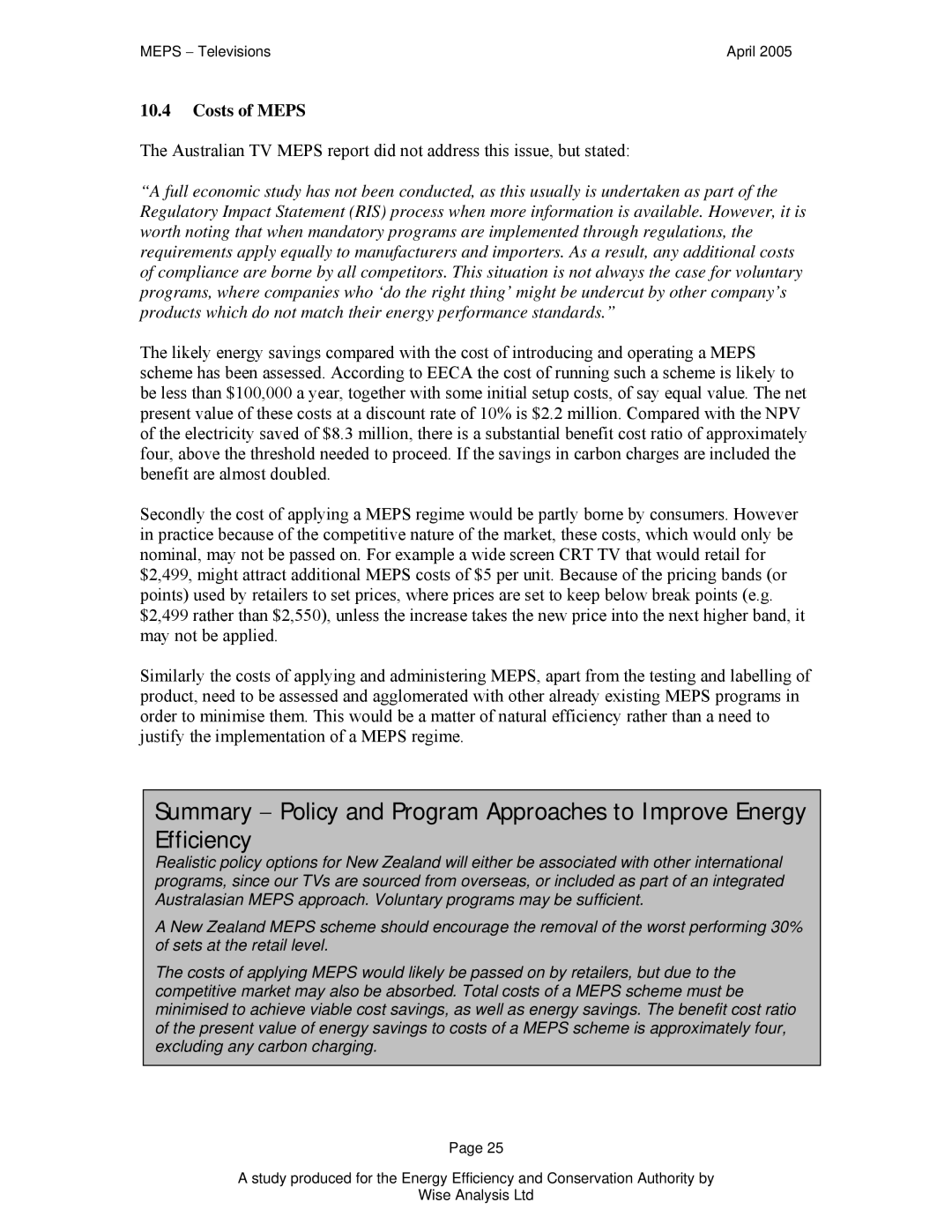
MEPS − Televisions | April 2005 |
10.4Costs of MEPS
The Australian TV MEPS report did not address this issue, but stated:
“A full economic study has not been conducted, as this usually is undertaken as part of the Regulatory Impact Statement (RIS) process when more information is available. However, it is worth noting that when mandatory programs are implemented through regulations, the requirements apply equally to manufacturers and importers. As a result, any additional costs of compliance are borne by all competitors. This situation is not always the case for voluntary programs, where companies who ‘do the right thing’ might be undercut by other company’s products which do not match their energy performance standards.”
The likely energy savings compared with the cost of introducing and operating a MEPS scheme has been assessed. According to EECA the cost of running such a scheme is likely to be less than $100,000 a year, together with some initial setup costs, of say equal value. The net present value of these costs at a discount rate of 10% is $2.2 million. Compared with the NPV of the electricity saved of $8.3 million, there is a substantial benefit cost ratio of approximately four, above the threshold needed to proceed. If the savings in carbon charges are included the benefit are almost doubled.
Secondly the cost of applying a MEPS regime would be partly borne by consumers. However in practice because of the competitive nature of the market, these costs, which would only be nominal, may not be passed on. For example a wide screen CRT TV that would retail for $2,499, might attract additional MEPS costs of $5 per unit. Because of the pricing bands (or points) used by retailers to set prices, where prices are set to keep below break points (e.g. $2,499 rather than $2,550), unless the increase takes the new price into the next higher band, it may not be applied.
Similarly the costs of applying and administering MEPS, apart from the testing and labelling of product, need to be assessed and agglomerated with other already existing MEPS programs in order to minimise them. This would be a matter of natural efficiency rather than a need to justify the implementation of a MEPS regime.
Summary − Policy and Program Approaches to Improve Energy Efficiency
Realistic policy options for New Zealand will either be associated with other international programs, since our TVs are sourced from overseas, or included as part of an integrated Australasian MEPS approach. Voluntary programs may be sufficient.
A New Zealand MEPS scheme should encourage the removal of the worst performing 30% of sets at the retail level.
The costs of applying MEPS would likely be passed on by retailers, but due to the competitive market may also be absorbed. Total costs of a MEPS scheme must be minimised to achieve viable cost savings, as well as energy savings. The benefit cost ratio of the present value of energy savings to costs of a MEPS scheme is approximately four, excluding any carbon charging.
Page 25
A study produced for the Energy Efficiency and Conservation Authority by
Wise Analysis Ltd
